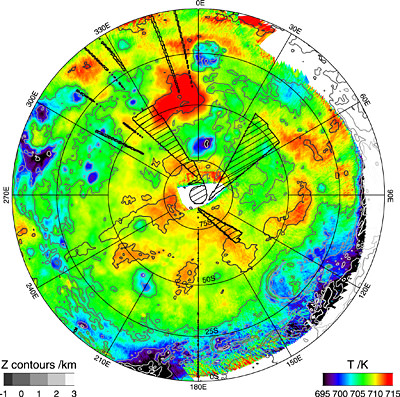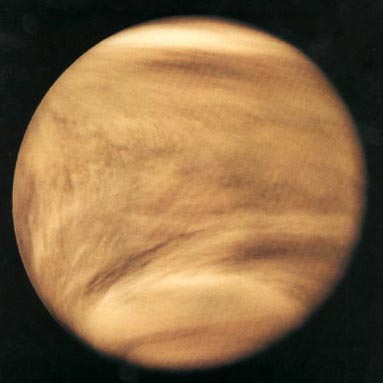[/caption]
Centuries ago, people believed that the Earth was the center of the Solar System. Slowly, that view was replaced with the heliocentric view. With that change came the realization that the planets orbit the Sun.
When Pluto was reclassified as a dwarf planet, Mercury became the planet with the most eccentric orbit. The eccentricity of an orbit is a measurement of how much the orbit deviates from a circular shape. If an orbit is a perfect circle, it has an eccentricity of zero, and that number increases with an increase in eccentricity. Mercury has an eccentricity of .21. Its orbit ranges from 46 million kilometers at the closest point to the Sun to 70 million kilometers at the farthest point. The closest point to the Sun in an orbit is called the perihelion, and the farthest point is the aphelion. Mercury is the fastest planet to orbit the Sun at approximately Earth 88 days.
Venus has the least eccentricity of any planet in our Solar System – eccentricity of .007 – with a nearly perfect circular orbit. Venus’ orbit ranges from 107 million kilometers at the perihelion to 109 million kilometers from the Sun. It takes 224.7 of our days to orbit the Sun. A day on Venus is actually longer than a year because the planet rotates so slowly. Seen from the Sun’s north pole, all of the planets rotate counter-clockwise, but Venus actually rotates clockwise; it is the only planet to do that.
Earth also has a very low eccentricity of .017. On average, the planet is about 150 million kilometers from the Sun, but it can range from 147 million kilometers to 152 million kilometers. It takes our planet roughly 365.256 days to orbit the Sun, which is the reason for leap years.
Mars has an eccentricity of .093 making it one of the most eccentric orbits in our Solar System. Mars perihelion is 207 million kilometers and its aphelion is 249 million kilometers from the Sun. Over time, Mars’ orbit has become more eccentric. It takes 687 Earth days to orbit the Sun.
Jupiter has an eccentricity of .048 with a perihelion of 741 million kilometers and an aphelion of 778 million kilometers. It takes 4331 Earth days – 11.86 of our years – for Jupiter to orbit the Sun.
Saturn has an eccentricity of .056. At its closest point, Saturn is 1.35 billion kilometers from the Sun, and 1.51 billion kilometers away at its farthest point. Depending on what position it is in its orbit, Saturn’s rings are fully visible or almost invisible. The planet takes 29.7 years to orbit the Sun. In fact, since it was discovered in 1610, Saturn has only orbited approximately 13 times. Earth has orbited the Sun almost 400 times since then.
Uranus has a perihelion of 2.75 billion kilometers and an aphelion of 3 billion kilometers from the Sun. Its eccentricity is .047. It takes Uranus 84.3 Earth years to orbit the Sun. Uranus is unique because it actually rotates on its side with an axial tilt of almost 99°.
Neptune’s eccentricity is .009, almost as low as Venus’. The planet has a perihelion of 4.45 billion kilometers and an aphelion of 4.55 billion kilometers. Since Pluto was reclassified as a dwarf planet, Neptune is the planet with an orbit farthest from the Sun.
Universe Today has articles on orbits of all the planets including Mercury and Mars.
There are a number of other sites, including one with animations of the orbits and what an orbit is.
Astronomy Cast has an episode on the orbit of the planets.







